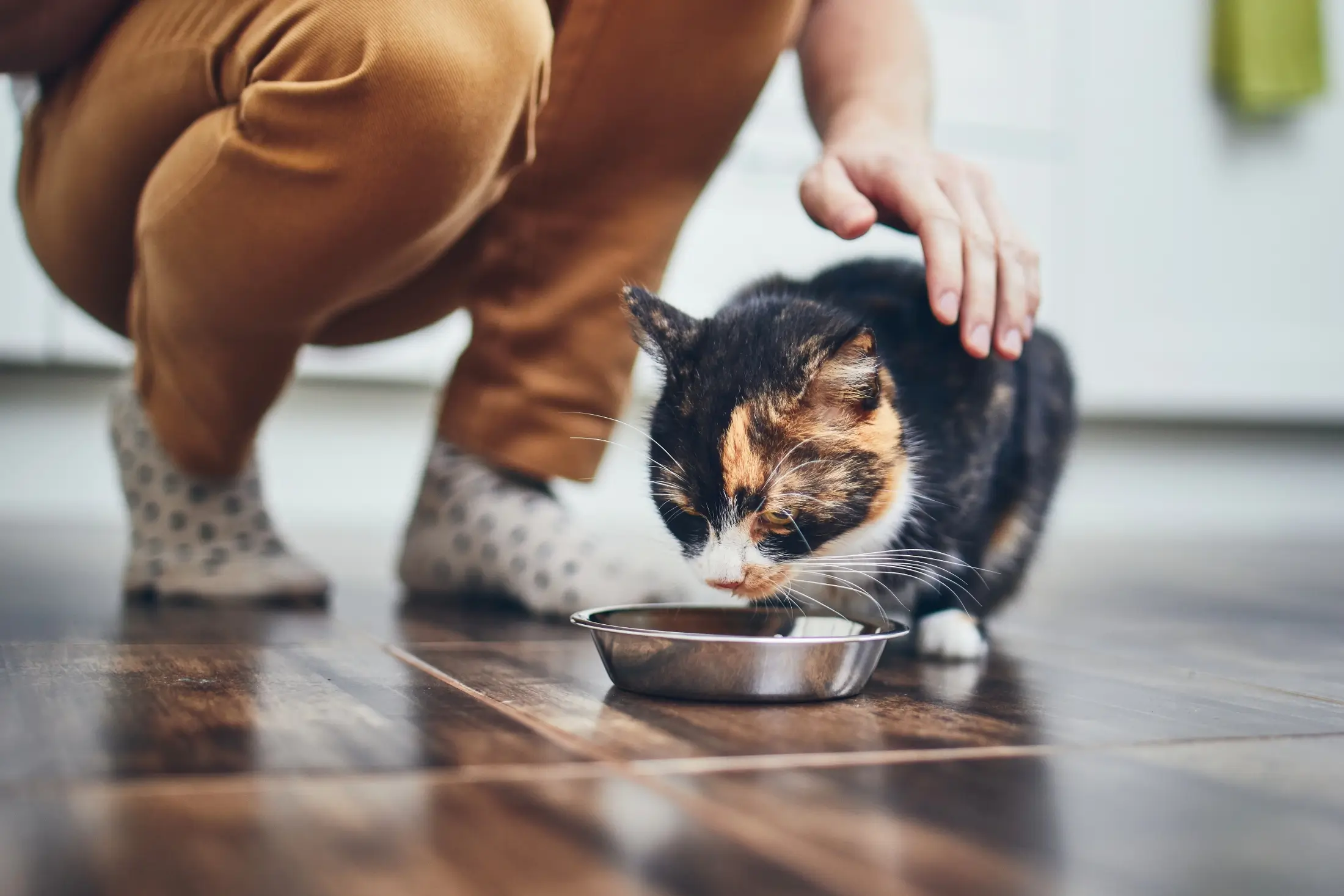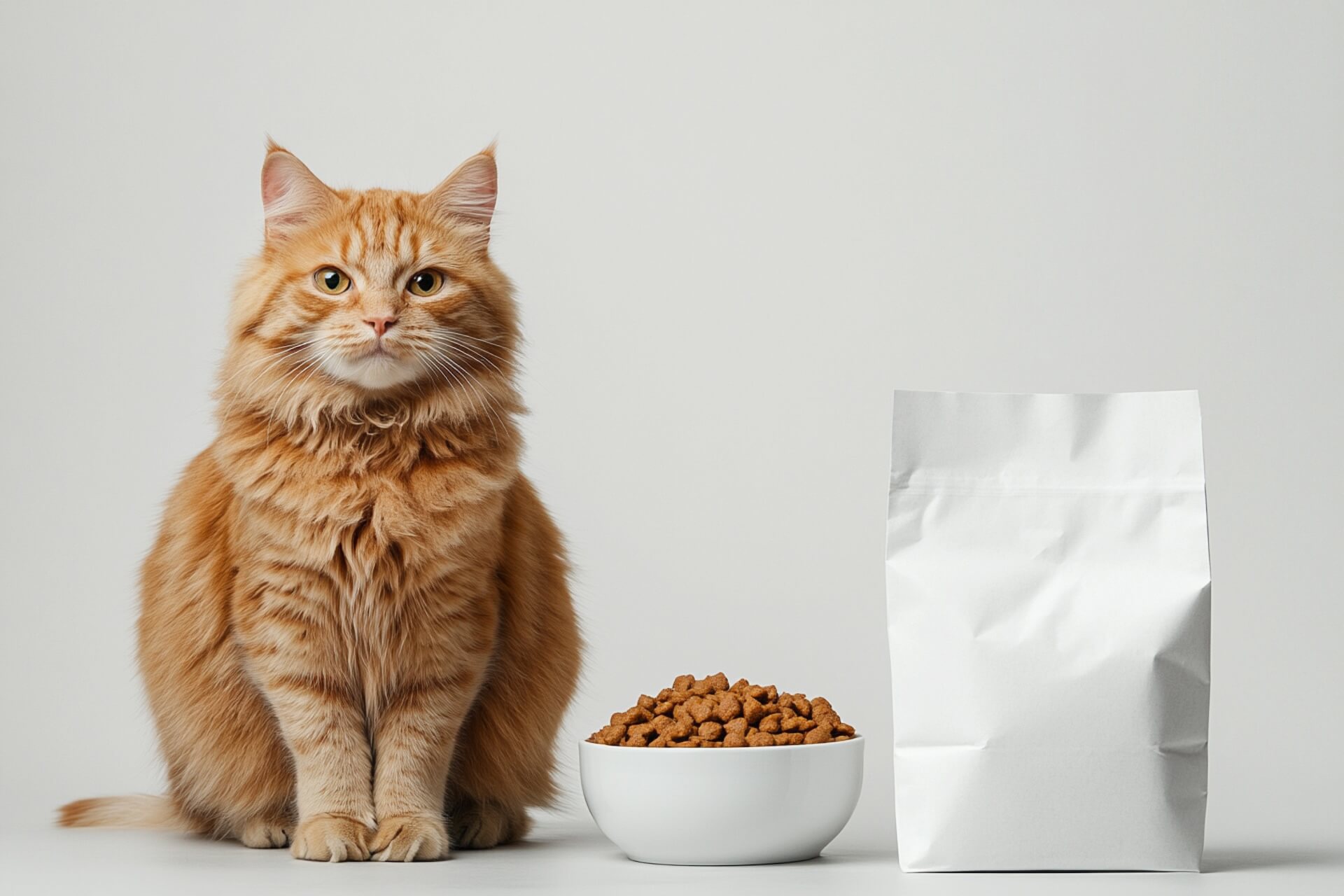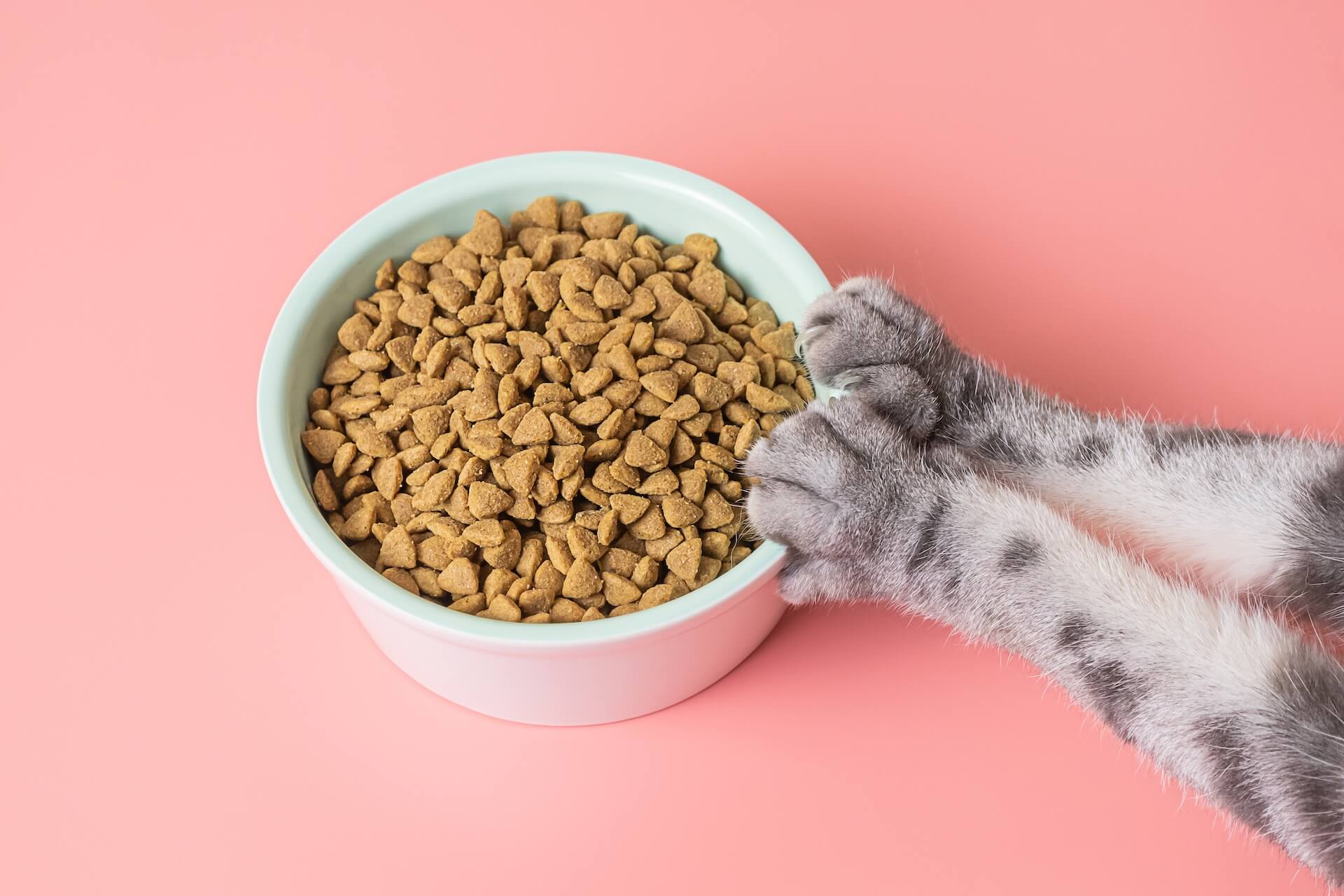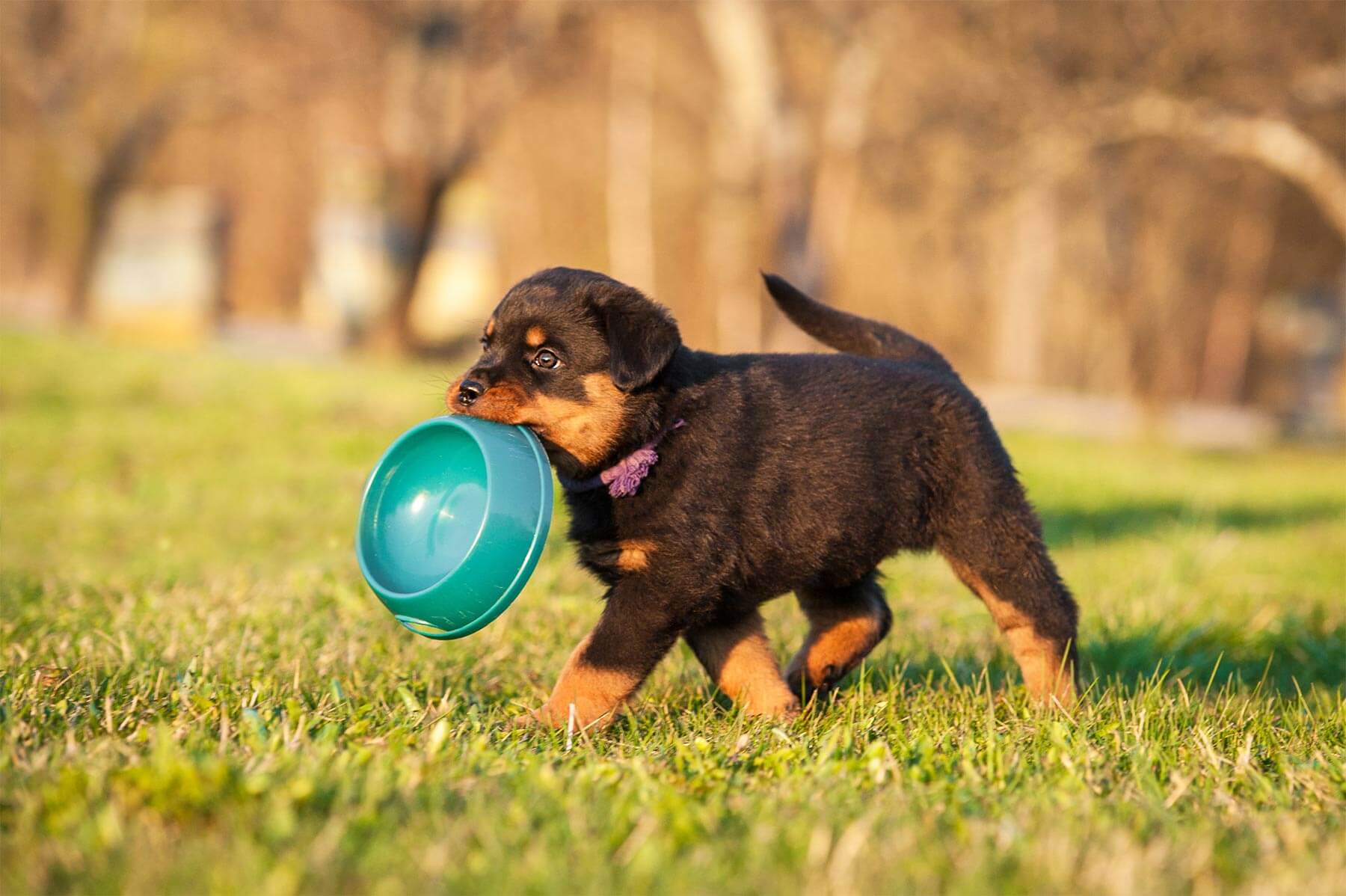Naju Pets | August 16, 2024

The Importance of Proper Cat Feeding
Ensuring your cat receives proper nutrition is vital for their overall health and well-being. Cats are obligate carnivores, requiring nutrients found primarily in animal products. A balanced diet that includes proteins, fats, vitamins, minerals, and water not only keeps your cat energetic and happy but also prevents various health issues. Proteins support muscle growth and repair, fats provide energy and support skin and coat health, while vitamins and minerals are crucial for bodily functions. At NaJu Pets, we are dedicated to providing the best care for your feline friend through our grooming and boarding services. For nutritional advice tailored to your cat’s specific needs, be sure to consult with your veterinarian.
How Often Should You Feed Your Cat?
Feeding frequency for cats varies based on several factors, including age, health, and activity level. Understanding these factors can help you create a feeding schedule that meets your cat’s specific needs.
Kittens (0-6 months)
Kittens have high energy needs and require frequent meals to support their rapid growth and development. Typically, kittens should be fed four to six times a day. A suggested feeding schedule might include small, frequent meals throughout the day. Refer to your veterinarian by age to determine the appropriate portions and ensure they are receiving balanced nutrition.
Transition to Wet Food
Kittens can start transitioning to wet food at around three to four weeks old. Wet food is beneficial for kittens as it provides necessary hydration and is easier to chew and digest. Gradually introduce wet food into their diet while still providing kitten-specific dry food to ensure they receive all essential nutrients.
Adult Cats (1-7 years)
For adult cats, a typical feeding schedule includes two meals a day—morning and evening. Portion control is crucial to prevent overfeeding and maintain a healthy weight. Using a cat automatic feeder can help regulate meal times and portions, ensuring consistency even when you’re not home. This is especially helpful for busy cat owners.
Senior Cats (7+ years)
As cats age, their dietary needs and feeding frequency may change. Senior cats might benefit from more frequent, smaller meals to accommodate their slower metabolism and potential health issues. It’s important to choose senior-specific cat food that addresses their unique nutritional requirements, such as joint support and kidney health.
Special Considerations for Senior Cats
Health conditions like arthritis, dental problems, or kidney disease can affect how and what your senior cat eats. Consult with your veterinarian to create a feeding plan tailored to your senior cat’s needs, ensuring they receive the proper nutrition to support their health and well-being.
Types of Cat Food
Choosing the right type of food for your cat is essential to ensure they receive the nutrients they need for a healthy life. There are several types of cat food available, each with its own benefits and considerations. Before making any significant changes to your cat’s diet, it’s always best to talk with your veterinarian to ensure you’re making the healthiest choices for your feline friend.
Dry Food
Dry food, or kibble, is a popular choice among cat owners due to its convenience and cost-effectiveness. It has a longer shelf life and can help with dental health by reducing plaque buildup. However, it’s important to ensure your cat drinks plenty of water, as dry food contains less moisture. To determine how much dry food to feed your cat, refer to the feeding guidelines on the packaging and adjust based on your cat’s weight and activity level.
Wet Food
Wet food is another common option, known for its high moisture content, which helps keep cats hydrated. It’s often more palatable to cats and can be easier for them to chew and digest. Incorporating wet food into your cat’s diet can provide variety and additional hydration. Start by mixing wet food with dry food or alternating between the two to see what your cat prefers.
Raw and Homemade Diets
Raw and homemade diets are becoming increasingly popular among cat owners who want more control over their pet’s nutrition. These diets can offer high-quality, fresh ingredients but come with certain risks. It’s crucial to follow safety tips and recommendations, such as consulting with a veterinarian or pet nutritionist to ensure your cat’s diet is balanced and safe. Raw food must be handled carefully to avoid bacterial contamination, and homemade diets should be properly researched to meet all nutritional requirements.
How Much Should You Feed Your Cat?
Determining the right portion sizes for your cat is crucial to maintaining their health and preventing obesity. General guidelines suggest feeding cats based on their weight, activity level, and overall health. Typically, adult cats need about 20 calories per pound of body weight per day. However, individual needs can vary.
Factors influencing portion sizes include your cat’s age, activity level, and any specific health conditions. For instance, a more active cat will require more calories than a less active one. It’s important to regularly monitor your cat’s weight and adjust their food portions accordingly. Below is a helpful chart to guide you on how much to feed your cat. For a specific plan tailored to your individual cat, always consult your veterinarian.

Monitoring Your Cat’s Weight
Keeping an eye on your cat’s weight is essential for their long-term health. Signs of underfeeding include noticeable weight loss, a dull coat, and lethargy. Conversely, overfeeding can lead to obesity, which increases the risk of various health issues such as diabetes and arthritis. Regular vet check-ups are important to ensure your cat is maintaining a healthy weight and to receive personalized feeding recommendations. Always consult your veterinarian before making significant changes to your cat’s diet to ensure it meets their specific needs.
Tips for Feeding Your Cat
Feeding your cat properly involves more than just providing the right type and amount of food. Here are some essential tips to ensure your cat’s diet contributes to their overall health and happiness.
Establishing a Feeding Routine
Creating a consistent feeding routine helps regulate your cat’s metabolism and digestion. Feed your cat at the same times each day to establish a predictable schedule. This can also help prevent overeating and reduce stress.
Importance of Fresh Water
Always provide fresh water for your cat. Hydration is crucial, especially if your cat primarily eats dry food. Ensure their water bowl is clean and filled with fresh water daily.
Avoiding Human Food and Treats
While it might be tempting to share your food with your cat, many human foods can be harmful to them. Stick to cat-specific treats and avoid feeding table scraps. This helps maintain a balanced diet and prevents potential health issues.
Tips for Multi-Cat Households
Feeding multiple cats can be challenging, especially if they have different dietary needs. Feed each cat separately to ensure they get the right amount of food without competition. Use multiple feeding stations if necessary to reduce stress and promote healthy eating habits.
Ensuring proper feeding routines is crucial, whether at home or during a stay at NaJu Pets. Our boarding services take into account your cat’s specific dietary needs, maintaining their regular feeding schedule to provide a comfortable and stress-free experience while you’re away.
Common Feeding Mistakes to Avoid
Avoiding common feeding mistakes can help ensure your cat stays healthy and maintains a balanced diet. Here are some pitfalls to watch out for:
- Overfeeding and Free-Feeding:
- Can lead to obesity and related health issues.
- Free-feeding, or leaving food out all day, can contribute to overeating.
- Stick to scheduled feeding times with measured portions to control calorie intake.
- Inconsistent Feeding Times:
- Cats thrive on routine.
- Inconsistent feeding times can cause stress and digestive problems.
- Establish and maintain regular feeding times to help your cat feel secure and maintain a stable metabolism.
- Ignoring Dietary Needs and Preferences:
- Each cat has unique dietary needs based on age, health, and activity level.
- Ignoring these needs can result in nutritional deficiencies or digestive issues.
- Consult with your veterinarian to ensure your cat’s diet meets their specific requirements.
- Using Low-Quality Food:
- Not all cat foods are created equal.
- Low-quality food can deprive your cat of essential nutrients and lead to health problems.
- Invest in high-quality cat food that meets nutritional standards to support your cat’s overall health and well-being.
By avoiding these common feeding mistakes, you can help ensure your cat receives the proper nutrition they need to stay healthy and happy. Always consult with your veterinarian for personalized advice on your cat’s diet and feeding routine.
Ensuring Your Cat’s Optimal Health Through Proper Feeding
Proper feeding is essential for maintaining your cat’s health and well-being. Understanding your cat’s nutritional needs, establishing a consistent feeding routine, choosing the right type and amount of food, and avoiding common feeding mistakes are all crucial steps in providing the best care for your feline friend. Always consult with your veterinarian to tailor a diet plan specific to your cat’s individual needs. By following these guidelines, you can ensure your cat leads a healthy and happy life. For more ways to keep your cat healthy, NaJu Pets offers professional grooming services and reliable boarding options to take care of your pet while you’re away.


